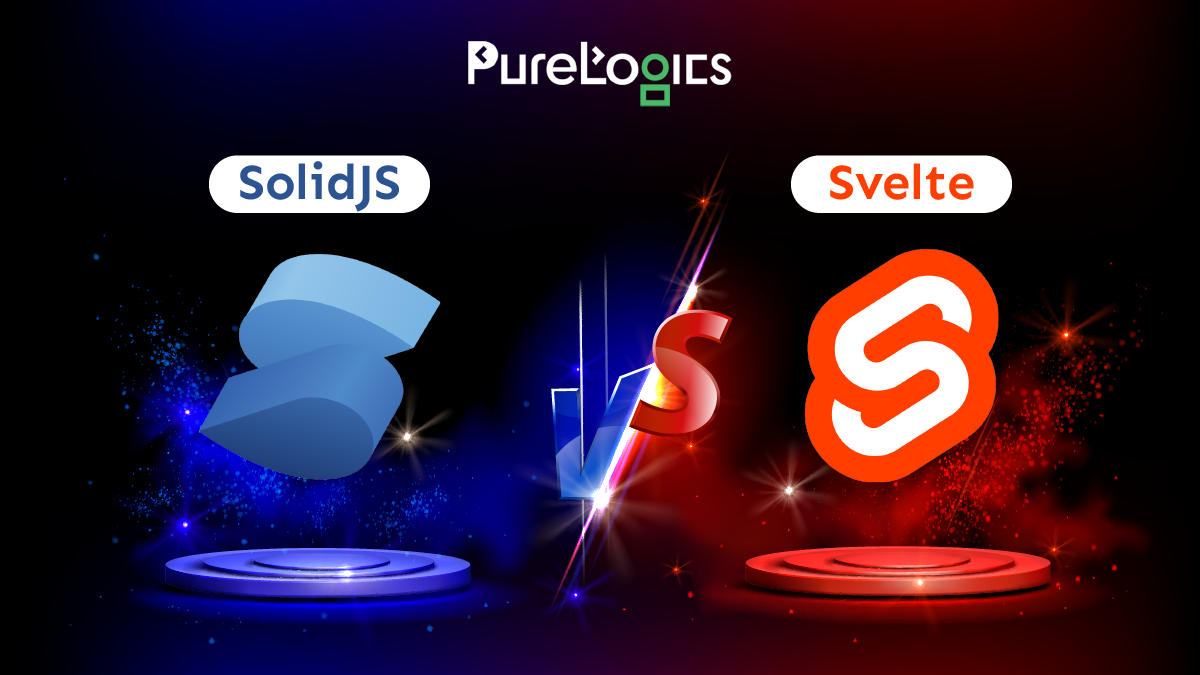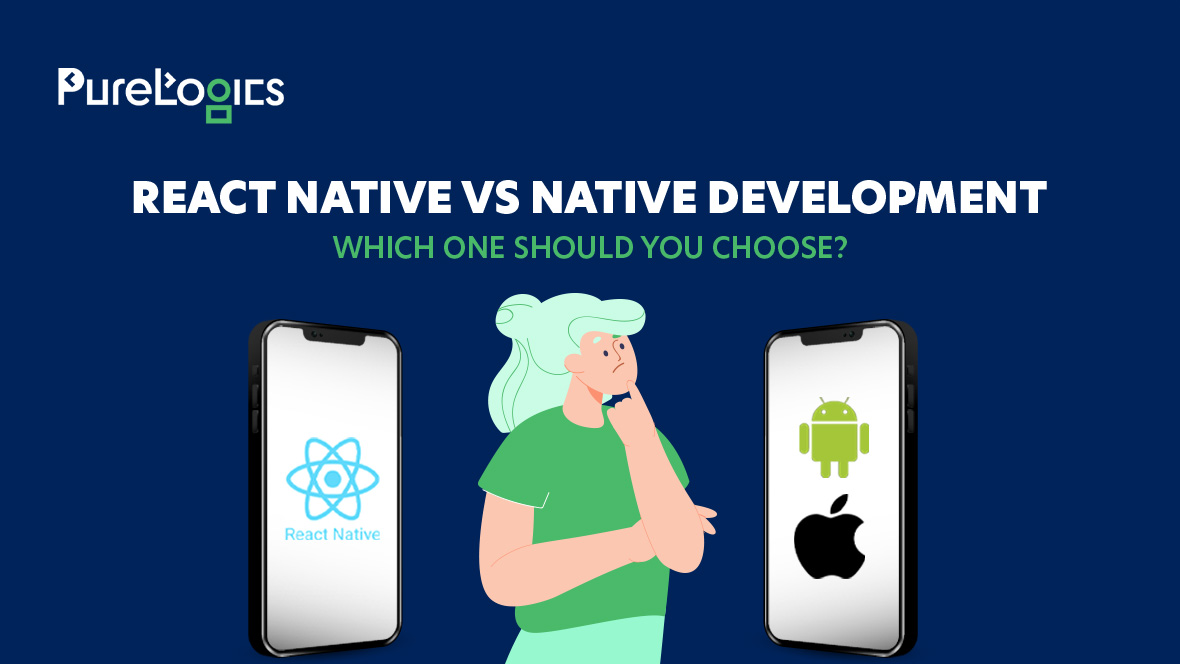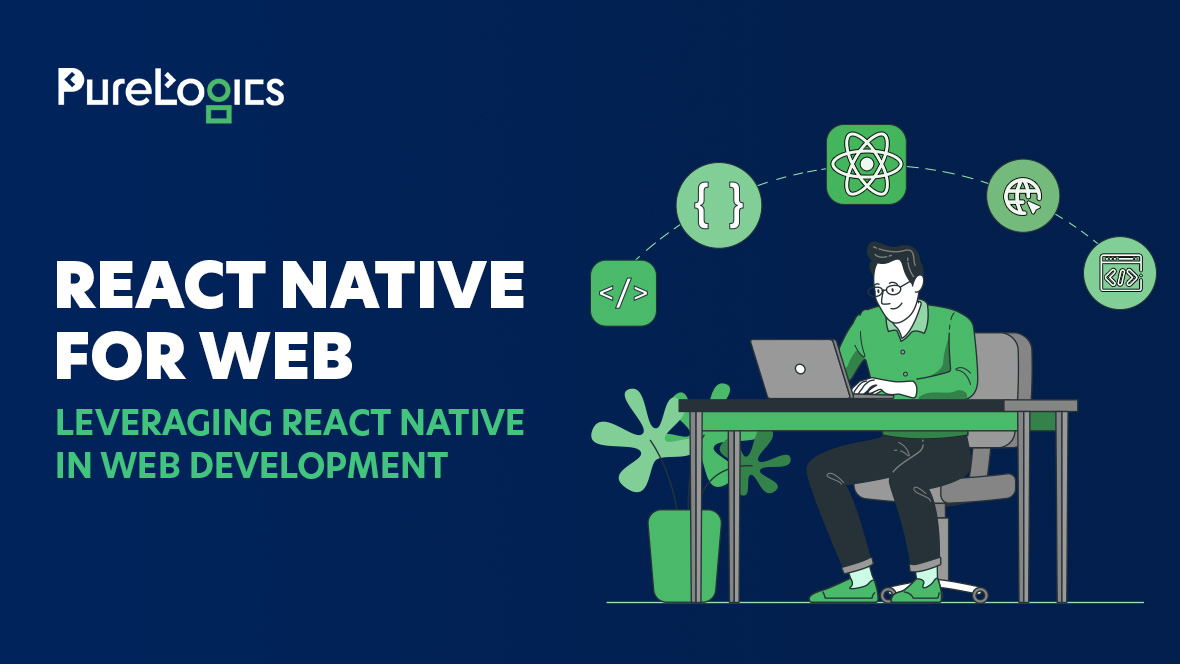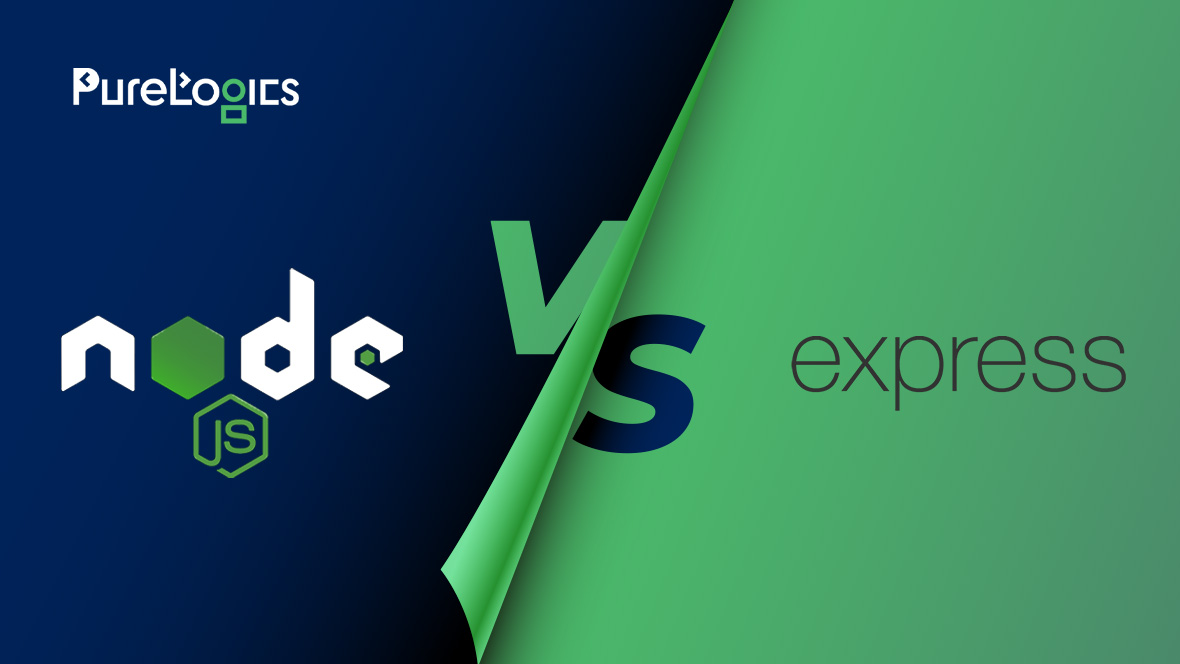Web development is continuously bringing new choices for front-end developers. It has made it difficult for them to choose among the available options.
Which framework are you employing? Is it React with a huge ecosystem? Or is it Vue, a lighter option? And what about plain JavaScript with some web components?
There are diverse options on the market. But the two most admired options are SolidJS and Svelte. A survey of Stack Overflow says that there is a rapid and continuous shift in developers’ prefs. In the survey, participants were asked to tell their favorite front-end frameworks. You will be surprised to know that their most favorite options were Svelte and SolidJS.
This shows that there is a great shift in the development process. So, let’s compare SolidJS and Svelte and highlight their distinctive features.
In this blog post, you’ll understand how both frameworks function and their pros and cons. You will also know which framework will meet your particular web development needs.
So, let’s start reading!
What is SolidJS?
SolidJS is a modern JavaScript library. It focuses on reactivity and performance. It builds simple yet powerful user interfaces. When it comes to web apps, this framework helps developers a lot.
SolidJS has some remarkable features and optimization options. This makes SolidJS more useful than many other UI libraries like Vue, React, and Angular. Moreover, SolidJS ensures that its user interface reacts quickly to changes in the base data.
The following are the top features of SolidJS:
- Server-side rendering
- Fine-grained reactive system
- Tiny footprint but has a big impact
- Excellent support for TypeScript
- Highly-efficient DOM handling
- Expressive and efficient JSX syntax
- Fine-grained dependency tracking
What is Svelte?
Svelte is a modern JS framework. Developers worldwide use Svelte to create static and user-friendly web applications. Whatever the project type, you can employ Svelte to create its single and reusable components. You can also use this framework to build larger applications on Vue, React, or other frameworks.
Top features of Svelte:
- Scoped styles
- Built-in functionality
- Declarative syntax
- Top-notch build step
- Reactivity without boilerplate
- No runtime framework
- Built-in animation capabilities
Contact Us Today
Get in touch to learn more about our services and how we can help you.
SolidJS vs Svelte: Top Uses
In today’s competitive web development times, both SolidJS and Svelte are popular among website developers. They build UI with these frameworks quite easily.
Both SolidJS and Svelte have advantages. Let’s discuss their use cases and compare their features!
Uses of SolidJS
Single-page applications (SPAs): This framework has strong reactivity and rendering abilities. These features make SolidJS the best choice for developing single-page applications (SPAs).
UI with complex state management: When your application project requires complex state management, you can use SolidJS as a framework. Its strong reactive system quickly handles complex UI scenarios.
Interactive components: The strong reactive nature of SolidJS create interactive components. It has dynamic forms and excellent visualization of data.
Uses of Svelte
Interactive web applications: Svelte has remarkable code generation capabilities that creates interactive web applications. For projects in which there is no compromise over quality, Svelte is a great option.
Data visualization: It has amazing animation capabilities. This allows web developers to prepare appealing data visualizations.
Mobile applications: Svelte is also a good option when it comes to creating mobile applications. Developers use it to craft an engaging user experience.
Pros of SolidJS
- Easy to learn and use
- A small bundle size
- Smooth interactions
- Seamless JSX integration
- High-quality, depending tracking
Cons of SolidJS
- A smaller ecosystem
- Difficult to learn for novices
- Limited tooling features in TypeScript
Pros of Svelte
- Scoped styles
- Optimized runtime code
- Easy component development
- No runtime framework overhead
- Built-in animation capabilities
Cons of Svelte
- A smaller ecosystem
- A complex build setup
- Difficult to learn for fresh developers
SolidJS vs Svelte: 5 Key Differences
Now you know the features, applications, advantages, and disadvantages of SolidJS and Svelte. Let’s look at the five key differences between SolidJS and Svelte!
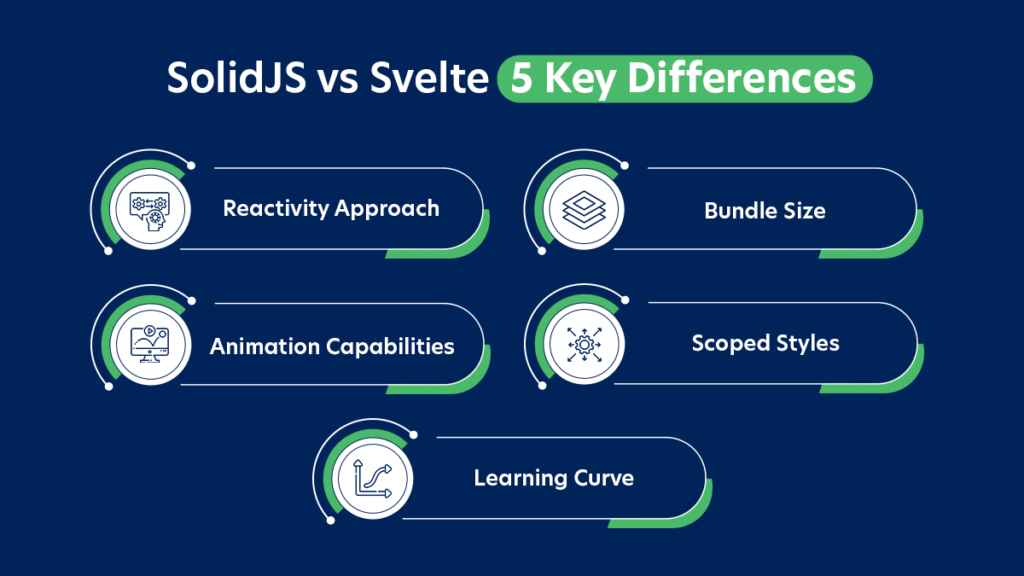
Reactivity Approach
A fine-grained reactivity system in SolidJS ensures updates where needed. It allows web developers to offer website users high-quality performance.
However, Svelte’s reactivity approach is a build-time approach. It produces optimized runtime code and ensures that there is quick execution in the browser.
Bundle Size
The bundle size of SolidJS is compact. For projects that need minimum load time and good performance, SolidJS is the best option. On the other hand, Svelte implements a build step. It generates highly optimized code and ensures small bundles without the need for a runtime framework.
Animation Capabilities
SolidJS has limited animation capabilities. But these capabilities are extremely useful for projects that have simple animation needs. On the other hand, Svelte has extraordinary animation features. Its built-in animation features allow developers to deliver an engaging experience for users.
Scoped Styles
SolidJS doesn’t have built-in scoped styles. It may lead to style conflicts when working on a large-scale project. However, Svelte has extraordinary-scoped styles. Usually, projects come across unintended style clashes, but using Svelte reduces their probability. This will also enhance the maintainability of your code.
Learning Curve
SolidJS is easy to learn. This makes it a good option for developers with varying skillsets. Svelte also has an easy learning curve. Features like declarative syntax and the absence of boilerplate code ensure quick and high-quality development.
SolidJS vs Svelte: A Brief Comparison
| Feature | SolidJS | Svelte |
| Reactive programming | ✓ | ✓ |
| Compilation model | ✓ | ✓ |
| Bundle size | ✓ | ✓ |
| JSX syntax | ✓ | ✗ |
| Template syntax | ✗ | ✓ |
| Learning curve | ✗ | ✓ |
| Reactivity system | ✓ | ✓ |
| Framework size | ✗ | ✓ |
| Official state management | ✓ | ✗ |
| Community and ecosystem | ✗ | ✓ |
Conclusion
SolidJS and Svelte are gaining immense popularity among website developers. They find building UI with these frameworks quite helpful and fun. Both frameworks offer their own advantages and disadvantages.
You must analyze the unique needs of your project before selecting between these two popular options. SolidJS is best for projects that need fine-grained reactivity and a basic design. But if you need optimized runtime performance, always choose Svelte as your front-end framework.
PureLogics has been providing web development services for 18+ years. We have the best and brightest professionals on our team that can successfully complete your project on time.
We offer a free 30-minute consultation call. Talk to our experts; your success story might begin with us.
Contact Us Today
Get in touch to learn more about our services and how we can help you.


 [tta_listen_btn]
[tta_listen_btn]
 May 27 2024
May 27 2024

